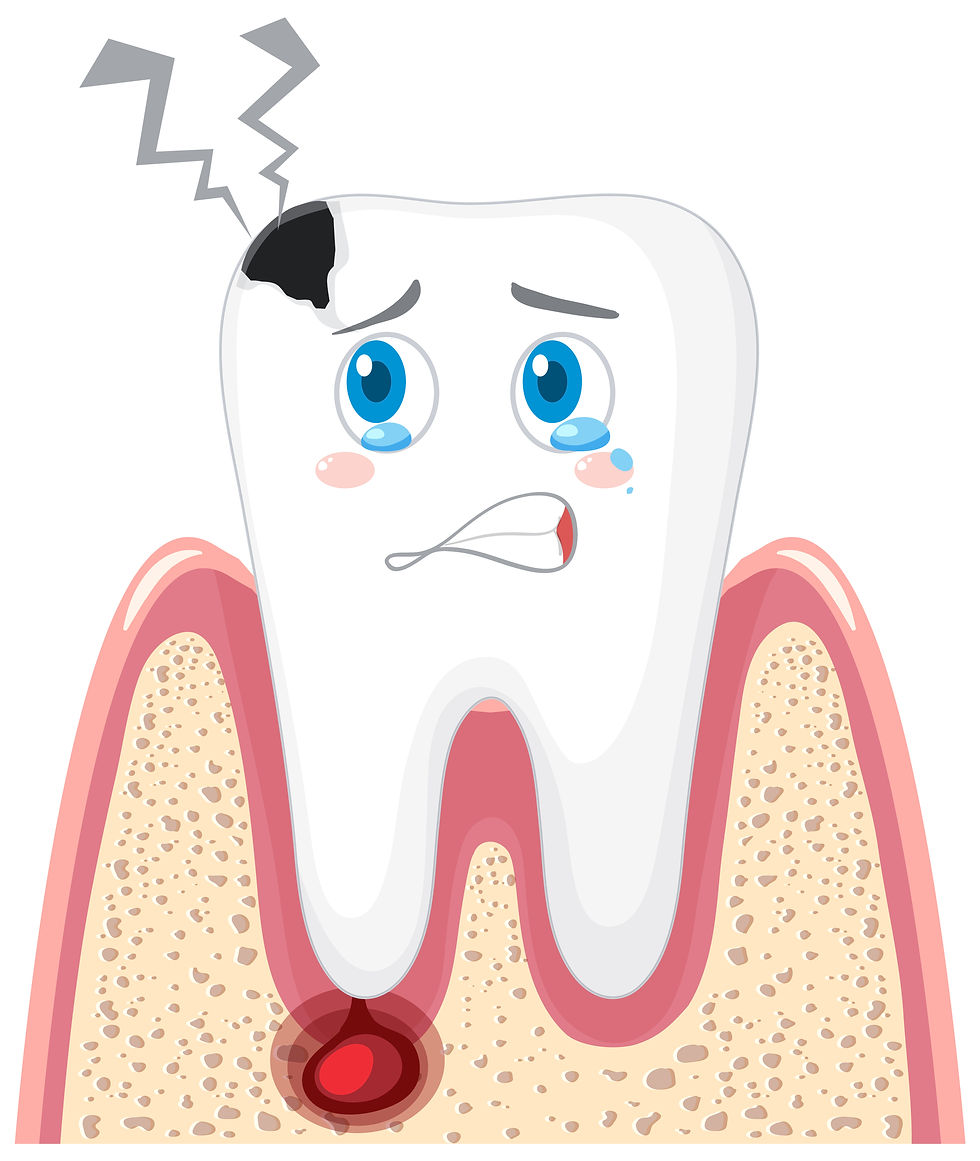When to See a Dentist for TMD Jaw Pain: Warning Signs You Shouldn’t Ignore
- Dr Monica Crooks

- Nov 28, 2024
- 3 min read
Are you struggling with persistent jaw pain or discomfort that just doesn’t go away? Maybe it hurts when you chew, or you notice a clicking sound when you open your mouth wide. These could be signs of TMD jaw (temporomandibular joint disorder)—a condition that affects the joint connecting your jaw to your skull.
But how do you know when it’s time to see a dentist for help? Let’s dive into the warning signs you shouldn’t ignore and what you can do to find relief.

What Is TMD Jaw?
First, let’s clarify. TMD refers to disorders affecting the temporomandibular joint (TMJ). This joint is like a sliding hinge that allows your jaw to move up, down, and side-to-side. When something goes wrong—whether it’s stress, injury, or another cause—it can lead to pain and other uncomfortable symptoms.
Common Symptoms of TMD Jaw
TMD jaw symptoms can vary from mild discomfort to severe pain that disrupts your daily life. Here are a few common signs to watch out for:
Jaw pain or tenderness, especially around the ears.
Difficulty opening or closing your mouth fully.
Clicking, popping, or grinding sounds when moving your jaw.
Frequent headaches or migraines.
Facial swelling or soreness.
Do any of these sound familiar? If so, keep reading to learn when professional care might be your best option.
When to See a Dentist for TMD Jaw Pain?
So, you’re dealing with jaw pain—but is it bad enough to visit the dentist? Here are some clear signs it’s time to book an appointment:
1. Persistent Pain That Doesn’t Improve
If your jaw pain has lasted more than a few days or worsens over time, don’t wait it out. Persistent pain might indicate an underlying issue that requires professional attention.
Example: I once had a patient who thought her jaw pain would go away after a weekend of rest. By the time she saw me, the pain had spread to her neck and shoulders, making it harder to find immediate relief.
2. Difficulty Chewing or Speaking
Does eating feel like a chore? Or maybe talking for long periods leaves your jaw sore? These could be signs your TMJ isn’t functioning properly.
3. Recurring Headaches or Earaches
Many people don’t realize their headaches or ear pain could be connected to their jaw. If you’re experiencing these symptoms without a clear cause, it’s worth checking if your TMD jaw is the culprit.
4. Locked Jaw or Limited Mobility
If your jaw feels stuck or you can’t open it as wide as usual, this is a red flag. A locked jaw can indicate advanced TMJ issues that need immediate attention.
What Happens at a Dental Visit for TMD Jaw Pain?
Feeling nervous about seeing a dentist? Don’t worry—it’s not as intimidating as it sounds. At Dr. Monica Crooks' clinic, we start with a thorough evaluation of your symptoms, medical history, and jaw movement.
We may recommend:
Imaging tests: To check for joint damage or alignment issues.
Custom treatment plans: This could include mouthguards, exercises, or stress management techniques.
Every treatment is tailored to your unique needs.
Can You Manage TMD Jaw Pain at Home?
Before seeing a dentist, there are a few things you can try:
Apply a warm or cold compress to reduce swelling and ease pain.
Practice relaxation techniques like deep breathing to lower stress levels.
Stick to soft foods to avoid overworking your jaw.
While these tips can help, they aren’t a substitute for professional care if the pain persists.
Don’t Wait—Listen to Your Jaw!
Ignoring TMD jaw pain can lead to bigger problems down the line, from chronic discomfort to more invasive treatments. If you’re noticing any of the warning signs we’ve discussed, it’s time to take action.
At Dr. Monica Crooks, we’re here to help you find relief and restore your quality of life. Schedule a consultation today and take the first step toward a pain-free smile.
What about you? Have you ever dealt with jaw pain or any of these symptoms? What worked for you? Share your experience in the comments—we’d love to hear from you!
.png)




Comments